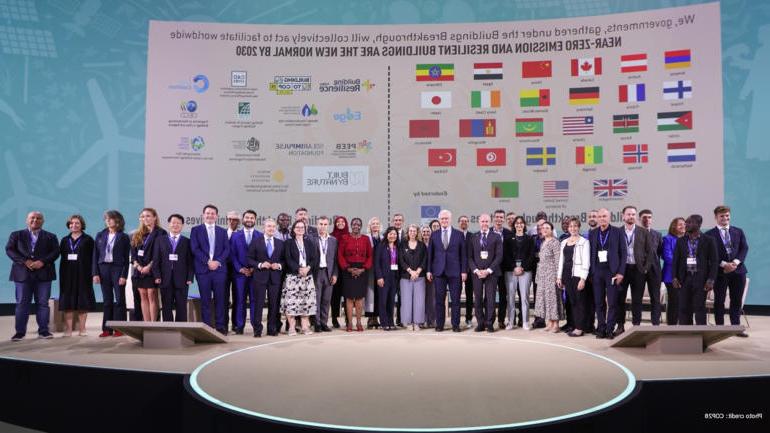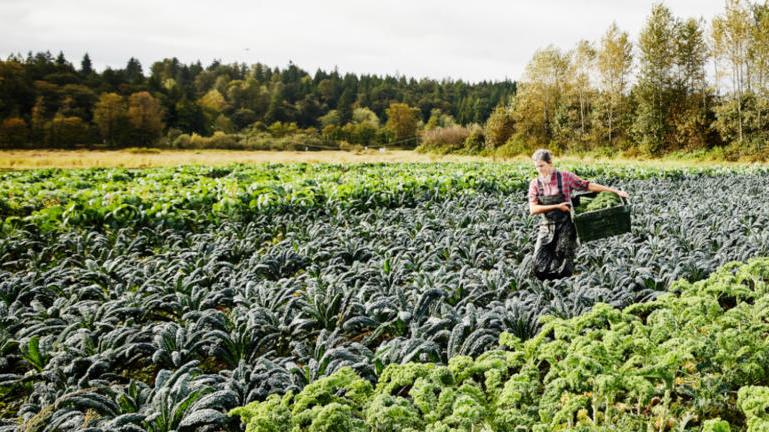大自然处于危机之中. 在过去的50年里, wildlife populations have declined by an average of 69% globally, and over one million species are now at risk of extinction in the coming decades (世界自然基金会,2022). There is a considerable risk that we will very soon reach tipping points beyond which nature can never recover.
占全球GDP的一半以上, 创造44万亿美元的经济价值, 是否中度或高度依赖自然,因此在自然退化或完全丧失时面临风险. 随着自然衰退, 生物圈失去了提供的能力, 规范和支持关键的生态系统服务, 包括, 碳封存, 水净化及初级生产(世界经济论坛,2020; TNFD 2023),挑战我们生存和发展的能力.
Ratified by 196 member states of the UN at COP15 in December 2022, the Kunming-Montreal Global Biodiversity Framework (GBF) established a 到2030年停止和扭转自然损失的全球目标. 比如碳的净零, 如果我们要防止灾难性的自然损失,这个“自然积极”的目标阐明了社会各方面所需要的雄心水平. “自然积极”一词在所有行业都越来越受欢迎,但在亚全球范围内仍然定义不清.
通过土地流转, 自然资源开发, 污染及其对气候变化的影响, the built environment is a significant cause of nature loss. Reversing this requires transformative change across the entire value chain, 和WBCSD最近出版的 自然积极的建筑环境路线图 绘制出这条路径. 这听起来可能令人生畏,但到2030年实现对自然有利的目标与到2030年将碳排放量减半、到2050年实现净零碳排放高度一致. 我们需要采取的许多使建筑环境脱碳的措施也有助于减少自然损失,反之亦然, for example: prioritizing building retrofit over new build, 推广循环设计, 实施可持续采购.
But how does the global ‘nature positive’ goal translate down to the building scale? 建筑能真正做到“自然积极”吗?? 我们能否利用我们对建筑和基础设施的全生命周期碳的理解和测量方面的最新重大进展来加速向自然积极的建筑环境迈进?
在建筑地块和附近周边地区的红线边界内停止和扭转自然损失的方法是很好的理解. 然而, 建筑供应链的全球化意味着与建筑相关的自然影响可能发生在数千英里以外的地方. 在整个行业, 人们对建筑在整个生命周期和整个价值链中如何影响远离场地的自然的理解有限.
上游价值链(物料提取), 采矿和制造业对自然的影响“体现”在建筑物的结构中,可能会使现场清理和建筑施工对自然的直接影响相形见绌. 一项研究表明,建造业对自然的影响,95%与上游(供应链)活动有关,而在建筑工地发生的影响,只占5% (Wilting and Oorschot, 2017). 然而, these embodied 影响 are rarely considered during building design 而且没有衡量具体自然影响的框架,部分原因是缺乏数据和价值链缺乏透明度.
点击图片放大.
与此相反, 在过去的十年里,在测量和理解建筑的隐含碳和整个生命周期碳方面取得了实质性的进展. 我们可以利用我们对整个生命周期碳的知识来加速我们对建筑的整个生命周期自然影响的理解.
什么是具体化的自然 影响和依赖关系?
全生命周期碳评估(WLCA)框架向我们展示了如何开始衡量建筑价值链上的具体自然影响:从原材料提取到生产, 设计和施工, 操作和维护, 最后是拆迁和浪费.
然而,与碳不同, 对自然的影响和依赖都必须仔细审查. The built environment is dependent on nature and is the largest global consumer of raw materials. In 2019, 城市地区负责提取600亿吨可再生和不可再生的原材料, 包括植物, 化石燃料, 矿石及其他建筑材料, 其中40%是石头, 砂石, 25%是原始木材(IPBES 2019). 沙子, 现代文明的基础, 是生产混凝土和玻璃必不可少的骨料,但开采的速度远远快于自然补充的速度. 随后, there is a looming resource crisis as our demand for sand will only increase as the global population grows, with close to 10 billion people expected to inhabit our planet by 2050 (UN, 2017).
另外, 建筑业依赖于取水, with global concrete production accounting for 9% of global industrial water withdrawals. By 2050, 75% of this water demand for concrete will occur in regions expected to experience water scarcity (Miller et al, 2018).
Many value chain stages of the built environment system also depend on functioning water flows and water reserves, 比如用于提取原料, 建设 of building materials and water use during operations.
We also must consider the in-situ (on-site) vs ex-situ (off-site) 影响 along the 建设 value chain. 以矿业为例, 建筑环境的关键, 现场活动产生大量空气, 水和土壤污染, 哪些会对人类健康产生严重影响, potentially leading to chronic respiratory diseases and heavy-metal blood poisoning (Nkosi et al, 2015; 拉杰和达斯,2023). 另外, mining has a detrimental direct impact on nature through land-use change, 该行业占全球毁林总量的7% (布拉德利,2020). The off-site indirect 影响 can be equally as significant, 由于交通基础设施的发展和新开发森林的其他经济活动可能导致距离原址100公里的森林损失和退化. 随后, one-third of the world’s forests may already be affected by mining. (布拉德利,2020).
设计一个自然积极的建筑:
It is not clear whether it will ever be possible to have a truly ‘nature positive building’. 这就要求对自然的整体影响, 在所有的复杂中, 这栋楼的整个生命周期, 价值链上下游, 是正的. It is certainly hard to imagine how that would be possible with today’s design approaches and technologies. 但“自然积极”确实设定了一个正规博彩十大网站,并建立了长期设计所必需的雄心水平, 建设, 建筑物的使用和拆除.
We must adopt circular economy principles across the 建设 industry, reducing the use of virgin raw materials and greatly lowering the levels of building waste, 在建造和拆除阶段,哪些可以占建筑材料重量的很大比例. This includes reusing buildings wherever possible; refusing 建设 on sites with high habitat value; efficiently building for long-term use. 我们还必须指定正确的材料, 避免使用不可再生能源, 自然-或碳密集和严重污染. 开发商和建筑设计师还需要开始向他们的价值链合作伙伴询问有关材料来源的挑战性问题, 并要求透明度和更好的数据. This means adopting nature-centered design approaches that enhance and leverage the function of healthy ecosystems, 将基于自然的解决方案与自然结合起来, 而不是反对它.
测量整个生命的本质 影响
采用一种 全生命周期 如果该行业要在2030年之前充分发挥作用,遏制和扭转自然损失,那么评估建筑物和基础设施对自然影响的方法至关重要. We need to understand the nature impact of every building across the 全生命周期, from extraction and processing of materials to the demolition and disposal phases. 通过利用已经取得的进步来评估建筑物的整个生命周期碳排放,并尽可能利用共同领域, we can introduce a common language for the nature 影响 of the 建设 value chain. 评估建筑物对自然影响的标准化方法将使基准和目标能够以一致的方式建立,这将是迈向自然积极建筑的重要的第一步. 然而, 与建筑物相关的自然影响的全生命周期评估在测量和度量点上存在显著差异,这比碳的测量和度量复杂得多. There is important activity underway to create frameworks for the measurement of nature-related risks and 影响, most notably by the Taskforce for 自然-related Financial Disclosures (TNFD)和以科学为基础的自然目标(SBTN). 而这些关注的是公司层面的影响, 这很可能是潜在的测量原则, methods and many of the metrics will have relevance at the building system level.
前进
真正的自然积极建筑可能永远都不可行, 但我们需要把这个作为我们的目标, 我们想要的目的地, if the built environment is to become part of the solution to the nature crisis, rather than one of the most significant causes of nature loss. 距离建筑工地较远的建筑物所体现的自然影响可能远远大于基于工地的自然影响. 建立一个衡量建筑物对自然影响的框架是关键的第一步,将由WBCSD成员在COP16之前推进. 全寿命碳测量框架, combined with emerging nature disclosure frameworks such as the TNFD, 提供一个有希望的前进方向, 推动对更高透明度和数据的需求. 最终,作为建筑环境从业者, 如果我们真的想扭转自然的损失, 我们必须大大提高我们的知识, data and understanding of these embodied nature 影响 in the same way as we have done for carbon.
Curious to explore examples of buildings that have a positive impact on nature? 看看这些案例研究:
- Refurbishing buildings to alleviate environment pressures with biodiversity benefits: 奥雅纳伦敦总部Triton广场1号
- The 建设 process of a low carbon and nature impact timber-based factory for Vestre in Norway, 由Woodcon, 斯道拉恩索的合作伙伴; ThePlus
- 产品创新 圣公会大学广场学习中心. 加伦 瑞士的豪瑞公司
资源









